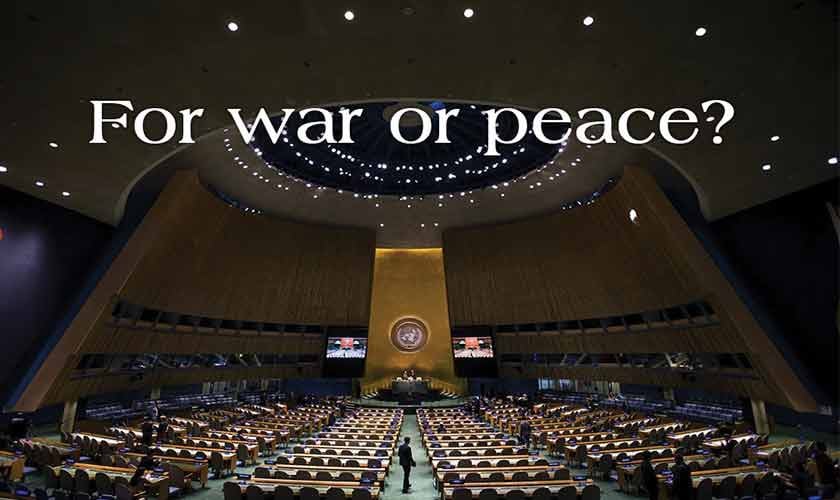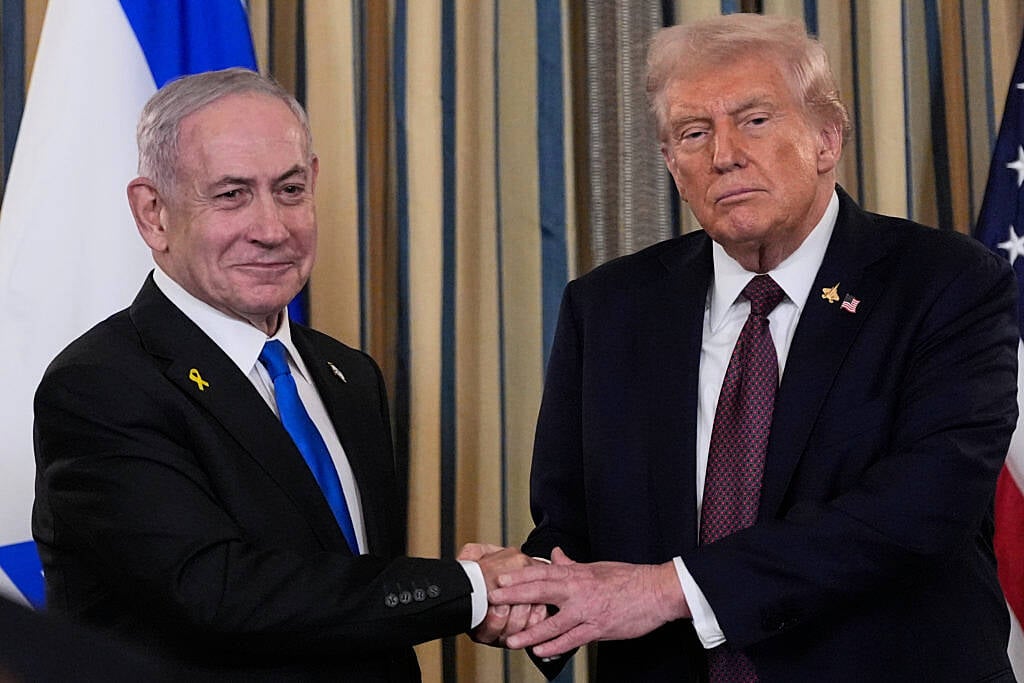In the volatile landscape of Middle East politics, two seismic events unfolded in late September, reshaping narratives around Israel’s war on Gaza.
On September 26, Israeli Prime Minister Benjamin Netanyahu delivered a fiery address to the United Nations General Assembly, vowing to block Palestinian statehood amid a walkout by dozens of delegates. Three days later, on September 29, US President Donald Trump unveiled a 21-point peace plan following a White House meeting with Netanyahu. The proposal aimed to end the violence in Gaza, facilitate the release of hostages, and chart a potential pathway to Palestinian statehood.
### A Shift in Washington’s Stance
The new proposal marks a significant shift from earlier positions held by the Trump administration. In February, President Trump shocked the world by suggesting that the US could take over Gaza, build a Riviera, and permanently relocate its two million residents. The current plan represents a transformative step toward Gaza’s revival, emphasizing freedom of choice for Gaza’s residents—no one would be forced to leave their homeland.
Those wishing to depart would be free to do so and return at their discretion. Meanwhile, a bold initiative encourages Gazans to stay and help shape a brighter future. Under the proposal, Israel would neither occupy nor annex Gaza, paving the way for redevelopment and self-governance.
Hamas and similar groups would have no role in Gaza’s future administration, ensuring a focus on stability and progress. Instead, a newly formed technocratic, apolitical Palestinian committee, backed by international experts, would manage essential public services and municipal operations to provide stability and support for the region’s people.
To complement this effort, President Trump plans to spearhead an ambitious economic development initiative. He aims to assemble a panel of experts behind the Middle East’s thriving modern cities. The suggestion of a potential future Palestinian state—after Gaza’s reconstruction and reform of the Palestinian Authority (PA)—marks a notable departure from the Trump administration’s previous refusal to endorse a two-state solution.
### Conditional Path to Statehood
Some analysts argue that the 21-point plan outlines a pathway to Palestinian statehood that is heavily conditional and largely theoretical. Statehood is not presented as a right or guaranteed outcome but as a distant reward contingent on meeting a series of vaguely defined and immensely challenging prerequisites.
A transitional government led by a technocratic, apolitical Palestinian committee is set to take shape to stabilize and rebuild Gaza. This initiative will be guided by the newly established Board of Peace—an international transitional body tasked with setting a strategic framework and securing funding for Gaza’s redevelopment. Chaired by President Trump, the board could include former UK Prime Minister Tony Blair.
The committee’s work will continue until the Palestinian Authority completes its reform programme. The plan, mainly developed by US special envoy Steve Witkoff and expected to be refined further, contains several provisions long sought by Israel. However, the proposal’s suggestion of a pathway to a future Palestinian state is at odds with Netanyahu’s stance.
### Netanyahu’s Rejection
In his UN General Assembly speech, Netanyahu made his position unequivocally clear:
> “Giving the Palestinians a state one mile from Jerusalem after October 7 is like giving Al Qaeda a state one mile from New York City after September 11. This is sheer madness. It’s insane and we won’t do it. Israel will not allow you to shove a terror state down our throats.”
These developments highlight a high-stakes diplomatic tightrope between Netanyahu’s unyielding security-first stance and Trump’s deal-oriented vision. By sidelining the Palestinian Authority and rejecting Hamas, the plan risks undermining the most credible foundation for a future state.
### The Core Challenges
The foundational steps—creating a de-radicalized, terror-free Gaza under an interim technocratic government—are not mere procedural hurdles but the core of the quagmire. These demands include the massive undertaking of disarming Hamas and a complex de-radicalization process of a traumatized population. Achieving this relies on an untested international force and a long-term peace that does not yet exist.
Mushtaq Shah, Pakistan’s former ambassador to Jordan and Egypt, acknowledges the plan’s selective ambiguity. He told *The News on Sunday* that the proposal is “vague enough to allow for broad interpretation, even manipulation, during implementation.” Despite its shortcomings, Shah describes the initiative as a vital lifeline for Palestinians facing relentless violence, emphasizing the importance of ending the bloodshed and allowing humanitarian aid.
### Recent Plan Revisions
In recent meetings in New York with US envoy Steve Witkoff and adviser Jared Kushner, Netanyahu secured key revisions on disarmament. Whereas the earlier draft offered amnesty to Hamas members pledging peaceful coexistence, the updated plan now requires them to surrender. It also strengthens language mandating the destruction and cessation of all offensive military capabilities.
The revised plan outlines three phases of Israeli withdrawal:
– After the first withdrawal, the Israel Defence Forces (IDF) will still control most of Gaza until an International Stabilisation Force oversees Hamas’s disarmament.
– Following the second phase, Israel would retain control over more than a third of the Gaza Strip.
– Even after the final phase of full withdrawal, Israel would maintain a permanent security buffer along Gaza’s perimeter.
Each withdrawal phase is conditioned on meeting standards and milestones tied to demilitarization, effectively allowing Israel to delay its exit until Gaza is deemed secure. If Hamas rejects or delays the plan, it will proceed in terror-free areas that the IDF will hand over to the International Stabilisation Force.
### Governance Questions Remain
Although the plan proposes new leaders committed to peace, regional security guarantees, and security forces to replace Hamas, the question of who will govern Gaza remains unresolved.
Ambassador Javed Hafiz argues that while Israel and the US can dismantle Hamas’s visible structure, the group will survive as a potent ideological force, much like Hezbollah. The stated goal of disarmament may result only in reducing Hamas’s military capacity to a manageable level—not total elimination.
Conversely, the Palestinian Authority, led by Mahmoud Abbas, faces widespread perceptions among Gazans as corrupt, illegitimate, and ineffective. The most likely—yet fraught—compromise is to install a technocratic government under a transitional authority.
President Trump has tapped former British Prime Minister Tony Blair to lead the Gaza interim authority. However, Blair is not trusted by many in the Arab world and the UK due to his controversial role in the Iraq War.
This transitional authority will likely include Arab members to provide legitimacy and avoid the appearance of a direct Israeli-American occupation. Gulf states are expected to fund reconstruction efforts.
The transitional government’s success will depend entirely on its ability to deliver tangible improvements to daily life while navigating the complex pressures of Palestinian politics, Israel, and skeptical Arab patrons.
### Regional and Ground Realities
According to Ambassador Hafiz, the primary focus of Hamas, Palestinian leadership, and Arab governments remains securing ironclad guarantees against annexation of Gaza and the West Bank, as well as restoring Jerusalem’s status.
However, diplomatic maneuvering remains starkly disconnected from realities on the ground. Israel has effectively annexed roughly 60 percent of the West Bank through military control and buffer zones. On July 23, the Knesset approved a bill aimed at imposing Israeli sovereignty over the West Bank—widely criticized as annexation.
While international powers oppose such measures, Israel continues rendering Gaza uninhabitable to spur Palestinian exodus and expands West Bank settlements. The United States has supported Israel’s position, with its ambassador recently using biblical terms—Judea and Samaria—for the West Bank, tacitly endorsing Israeli territorial claims.
Despite Tel Aviv’s strong desire, annexation of the Jordan Valley seems unlikely at present. Gaza’s near-total destruction requires an unprecedented, multi-billion-dollar reconstruction effort involving experts to build a modern urban economy—a process likely to take many years.
### Reconstruction and International Roles
The US and Israel may prefer not to assign the rebuilding role to the United Nations Relief and Works Agency for Palestine Refugees (UNRWA), having previously sought to undermine the organization.
Coordinating among multiple Arab states with differing priorities and foreign policies will be complex. Ambassador Hafiz suggests two possibilities: either UNRWA is revitalized, or Egypt, Turkey, and Gulf states take the lead. A Middle East-led approach may offer greater regional legitimacy.
He emphasizes that the Arab world must organize effectively to seize this opportunity to rebuild Gaza and foster long-term stability.
### The Explicit Pathway to Statehood
The plan makes statehood a declared goal contingent on two vague conditions: advancing Gaza’s redevelopment and implementing PA reforms. This intentional vagueness—failing to specify what “advanced” means or the exact reforms required—creates a mechanism allowing statehood to be indefinitely postponed.
While the plan commits the US to facilitating a final settlement on core issues like borders, Jerusalem, and refugees, its launch depends on successful completion of highly ambitious security and governance steps—a sequencing that has historically doomed similar initiatives.
Ultimately, the proposal offers Palestinians a conditional pathway to statehood, requiring them to build a state tailored foremost to Israeli security needs.
—
These developments underscore the complexity of resolving the Gaza conflict, balancing security concerns with aspirations for Palestinian self-determination amid regional and international pressures. The road ahead remains fraught with challenges, but the new plan signifies at least an attempt to forge a path toward peace and reconstruction in one of the world’s most enduring conflict zones.
https://www.thenews.com.pk/tns/detail/1348319-trumps-blurry-path-to-peace

